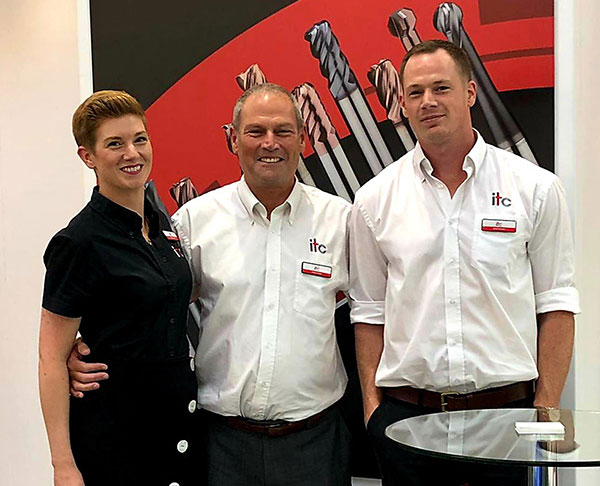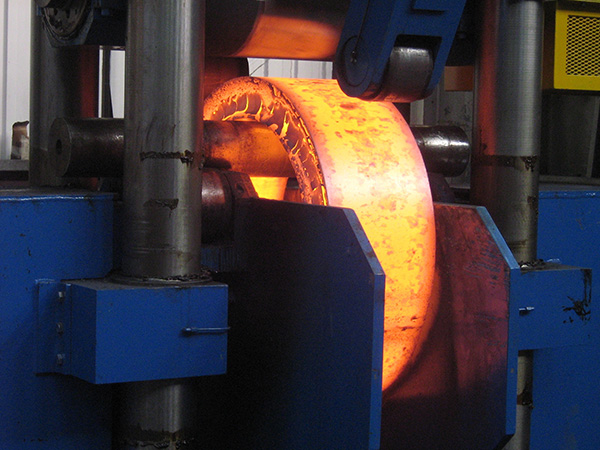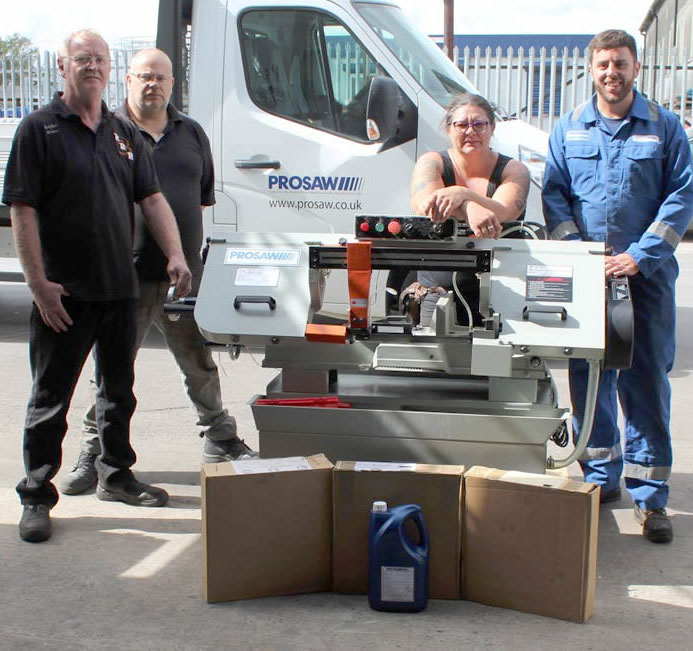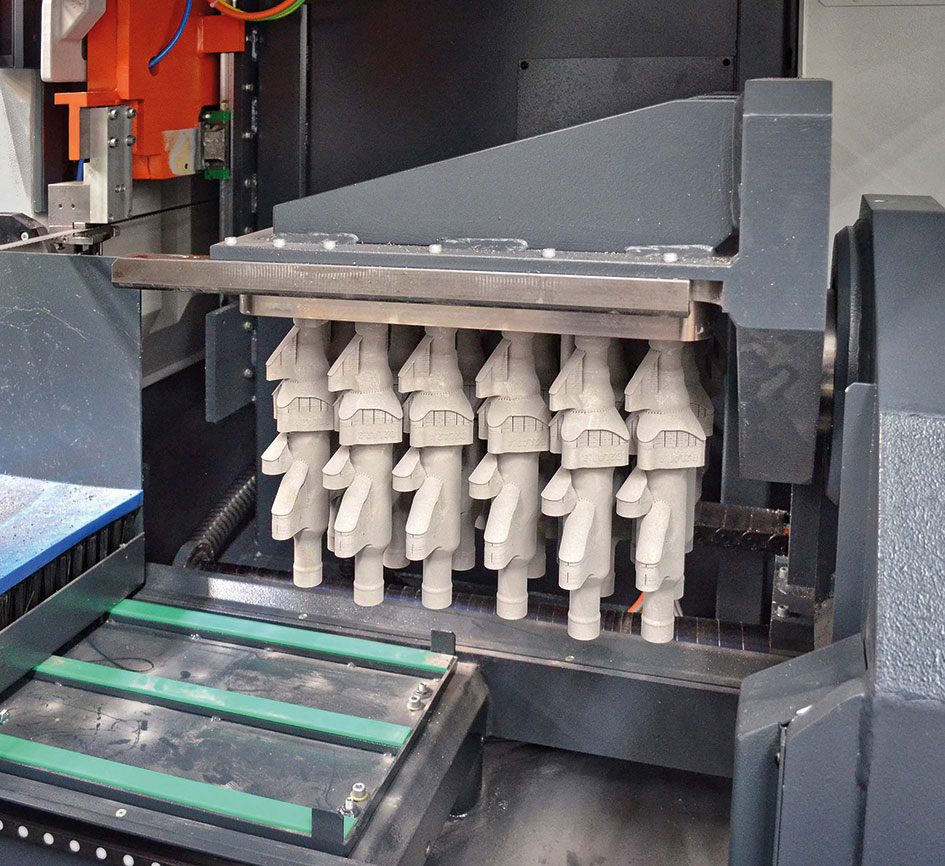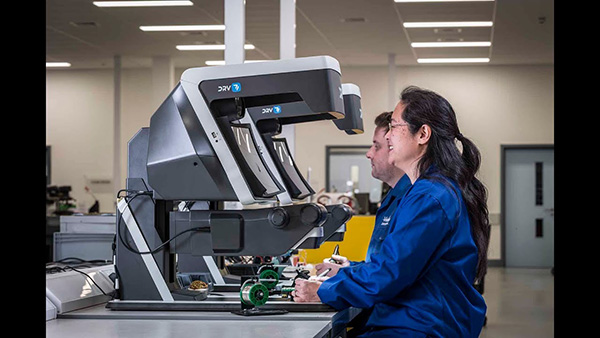To save time, weight and costs when producing metal aircraft components, Airbus Helicopters in Donauwörth, Bavaria, part of the Airbus Group, recently turned to additive manufacturing. The company not only develops and produces a range of helicopter models such as the H135 and H145, but specialises in the manufacture of more than 4000 doors for passenger and cargo aircraft every year.

To separate the titanium parts from their 400 x 400 mm titanium base plates rapidly, economically and without damage after they have been 3D printed, Airbus Helicopters recently purchased an automatic KASTOwin AMC bandsaw from Kasto. The base plate with 3D printed shafts weighing up to 40 kg is transported from the 3D printer by forklift truck to the saw and bolted securely to a clamping mechanism.
After the machine door closes, the mechanism rotates through 180° so that sawing of the components to remove them from the base plate is performed upside down. This design offers considerable advantages in additive manufacturing as, after being cut, the parts cannot topple over or buckle, preventing the risk of damage that could lead to time-intensive reworking or even expensive scrap.
As the plate is ground flat after each build so it can be repeatedly reused, it becomes progressively thinner. With this thought in mind, before sawing begins, an employee has to measure its thickness when clamped and enter the figure into the job wizard of the AdvancedControl CNC. The bandsaw blade, actuated by a precision ballscrew drive, then moves precisely to the programmed height. When cutting is complete, the shafts fall into a padded container to prevent damage and are removed through a flap.
For further information www.kasto.com







